4 Methods Used in Executive Development Programs
In the post-COVID economy, CEOs need to confidently steer their organizations towards success. Top management will need to be able to engage and inspire others through their own example. These are skills that are easily acquired through formal training. There are numerous benefits to this type of training: for example, C-level leaders who have received formal training indicate their companies are 1.6 times more likely to be in the top five percent of financial performers than those without formal training.1
The video below talks to how leaders can deepen their understanding of themselves by taking today’s skills and growing them for tomorrow’s world of work:
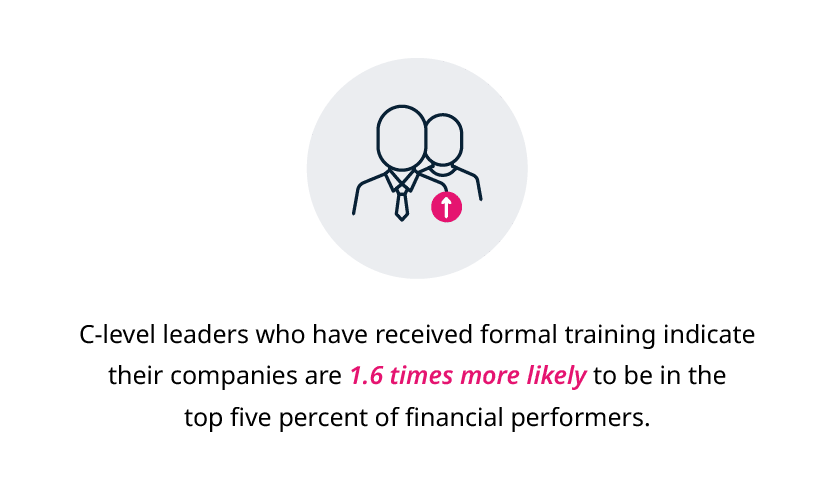
In order to remain successful in a fast-paced, competitive landscape, it’s key for today’s businesses to make executive leadership training programs part of their DNA.
Let’s take a closer look at what these programs entail:
What is an Executive Development Program?
An Executive Development Program (EDP) incorporates both short- and long-term training methods through a systemized, continuous process where employees learn advanced knowledge and skills to prepare them for leadership.2
Once you’ve made the commitment to improve leadership skills within your organization, implementing an EDP is the best place to start. It plots the plan your organization will follow in terms of nurturing leadership skills in all employees, at all levels. This program should cover goals that align with strategic business and interpersonal needs.3
There are two streams of EDPs that are worth considering:4
1. Formal training
Formal training comprises classroom-based and online courses, seminars, formal mentorship programs, and certification programs.5
Classroom-based training for leaders includes a Master of Business Administration (MBA) and an Executive Master of Business Administration (EMBA), arguably the best executive training options out there.6 A formal mentorship component is usually included alongside classroom-based learning to support participants with ongoing and practical feedback as they learn.7
2. Informal training
Informal training includes anything that isn’t covered under formal training. Examples of informal training methods include:
- Rotational assignments
- Action learning, where small groups tackle problems together to learn as a unit8
- Task forces
- Supplemental readings
- Speaker forums and conferences
- Peer coaching
These options typically form the building blocks of informal training.9
The top three Executive Development Program methods
While there are multiple EDP methods to consider, the following three have proven to be effective:
1. Face-to-face learning
The benefit of face-to-face learning is that a formal mentor facilitates the training and participants get the chance to discuss, collaborate, practice, and engage in roleplay. This all takes place in a ‘live’ environment with the facilitator present to guide the process. Learning as part of a group and being held accountable are both powerful learning tools.10
2. Online learning
Online learning (or e-learning) allows for flexibility – participants can typically do the training at times that suit them. Executives can follow a self-study route, learn from or with a facilitator or peers, or participate in a formal development program.
Online learning is typically more cost-effective than face-to-face learning programs. In addition, it saves time: research shows that online learning requires 40 to 60 percent less employee time than traditional classroom learning.11
3. Blended learning
This training approach blends face-to-face and online learning, with one method supporting the other.
Many companies choose to follow this route for the simple reason that it blends the established success of more traditional approaches with the innovation of modern techniques and tools. Organizations can use this learning method in various ways, such as offering formal, face-to-face mentorship opportunities during online programs or supporting part-time, classroom-based programs with online material. The advantage of blended learning is that participants receive some of the benefits of both approaches.12
It’s important to implement the program that’s right for your company and its executive leadership. Before you develop an EDP, answer the following questions:
- What type of budget is necessary to support a formal training program?
- What skills and values do you want to instill in your executive leaders?
- How do your executive leaders typically prefer to learn?
Five steps to creating an Executive Development Program
Now ask yourself: where will you find your next leaders? If your focus is on external recruitment alone, acquiring the right talent could be costly. Your organization’s future leaders may already be within your company.13 It could be an important step to nurture your workforce through an EDP and identify employees with leadership potential along the way.
There are five steps to creating the ideal EDP for your business:
Step 1: Find leadership potential
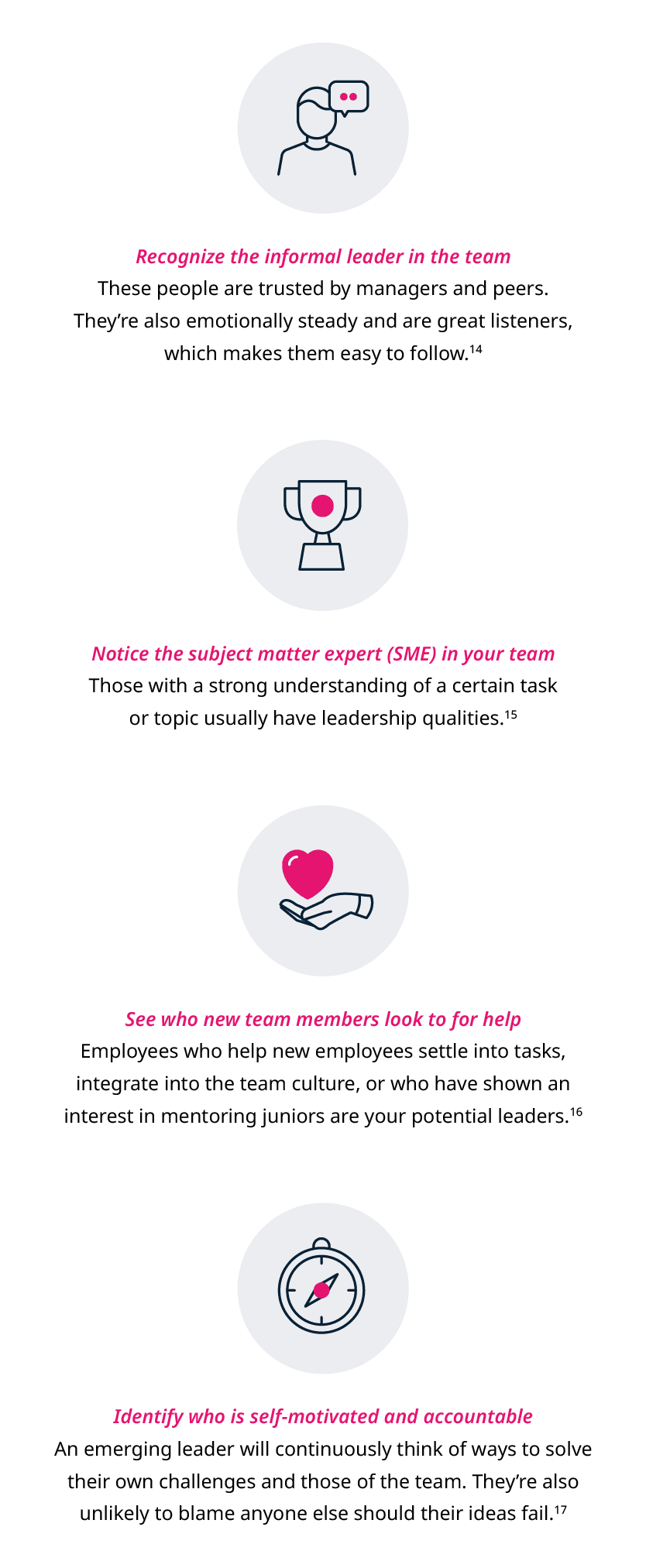
Step 2: Build a coaching culture
Employee and peer-to-peer coaching lead to improved leader engagement.
When peers coach and mentor, strong relationships and leadership skills are the result. This promotes shared leadership and gives employees the opportunity to enhance their leadership potential in less formal and more relaxed situations.18
Step 3: Develop existing managers into leaders
Help your managers work on these skills:
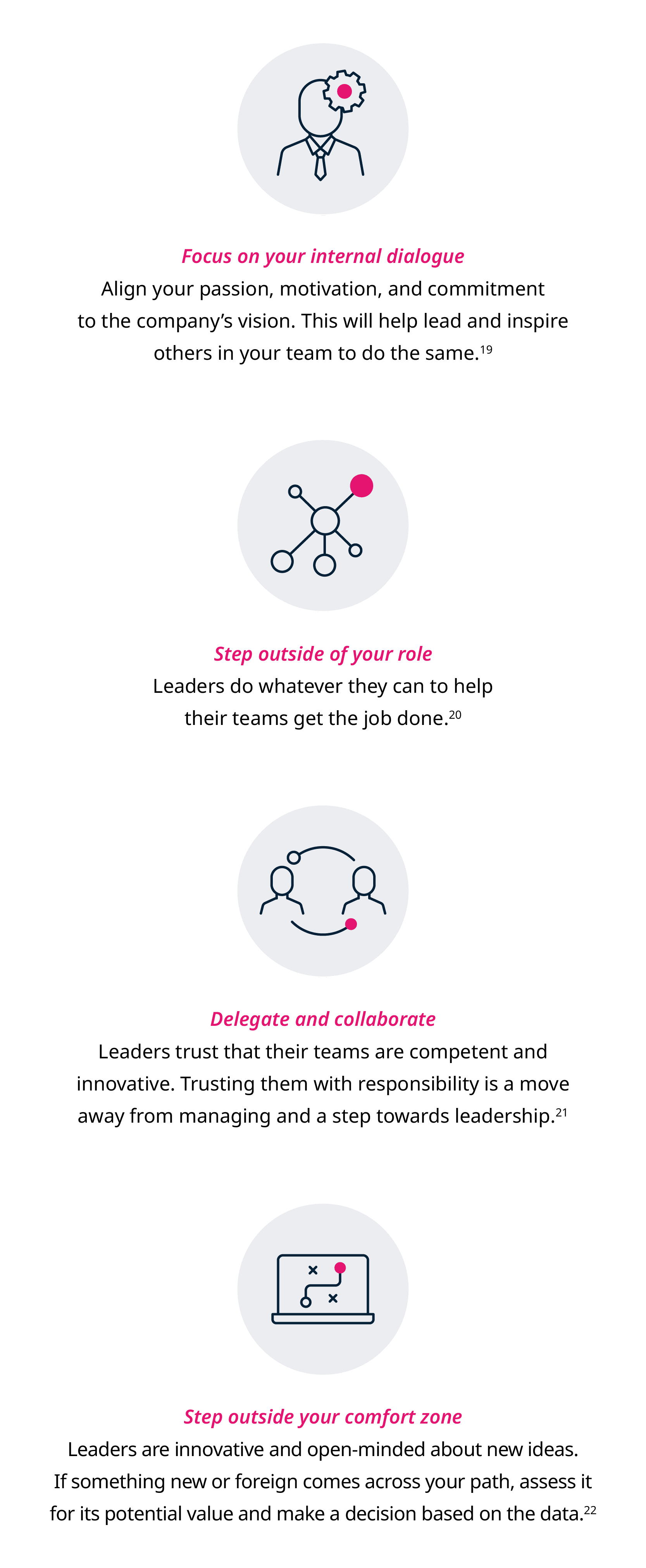
Step 4: Train new leaders
Once you identify potential leaders, it’s important to provide opportunities in their day-to-day activities to help them flex their leadership ‘muscles’:
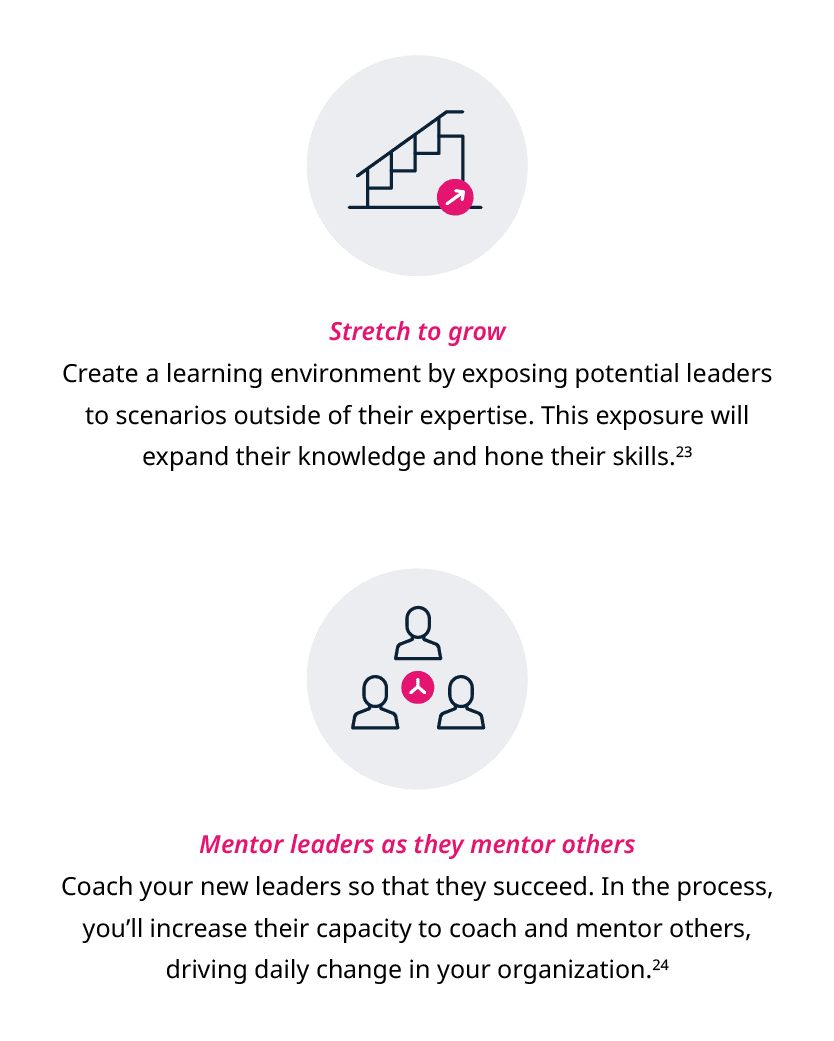
Step 5: Nurture and retain leadership talent
Nurturing the talent in your company helps prevent skills gaps and costly recruitment efforts down the line. Take these actions:
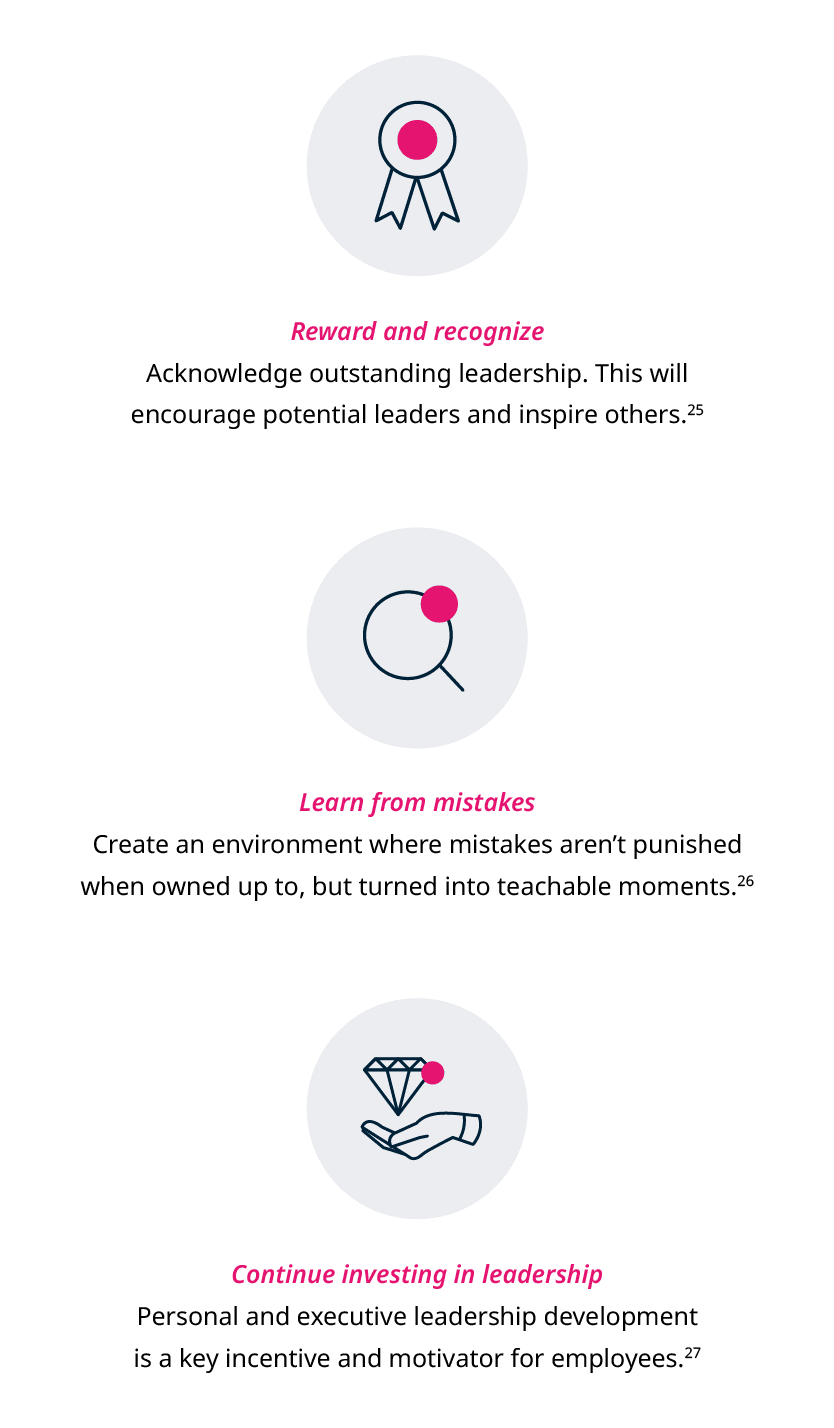
Reskilling and training employees for the changing nature of jobs takes a joint effort, and today’s organizations must play a key role in these partnerships.28 The steps highlighted in this article can ensure you’re constantly improving and experiencing organizational growth. As your employees grow to be the next generation of leaders, your company will benefit in numerous ways.29
Kickstart the investment in your organization’s future with a collection of courses focused on developing leadership and interpersonal skills.
- 1 Neal, S., et al. (2021). ‘Global Leadership Forecast Series: CEO Leadership Report 2021’. Retrieved from DDI.
- 2 S, N. (Nd). ‘Executive development’. Retrieved from Economics Discussion. Accessed January 24, 2022.
- 3 (Feb, 2022). ‘Leadership development plan’. Retrieved from Valamis.
- 4 (Feb, 2022). ‘Leadership development plan’. Retrieved from Valamis.
- 5 (Feb, 2022). ‘Leadership development plan’. Retrieved from Valamis.
- 6 (Nd). ‘MBA vs EMBA: What’s the difference?’. Retrieved from The Princeton Review. Accessed January 24, 2022.
- 7 (Feb, 2021). ‘24 Reasons why mentorship is important’. Retrieved from Indeed.
- 8 (Nd). ‘What is action learning?’. Retrieved from WIAL. Accessed January 24, 2022.
- 9 (Feb, 2022). ‘Leadership development plan’. Retrieved from Valamis.
- 10 Cooke, G. (Jan, 2022). ‘Online training vs face to face learning’. Retrieved from Elucidat.
- 11 Cooke, G. (Jan, 2022). ‘Online training vs face to face learning’. Retrieved from Elucidat.
- 12 Cooke, G. (Jan, 2022). ‘Online training vs face to face learning’. Retrieved from Elucidat.
- 13 (Jul, 2020). ‘Leadership development: How to spot future leaders at your organization’. Retrieved from Leadership Resources.
- 14 (Jun, 2021). ‘5 Smart ways to identify leaders in your organization’. Retrieved from Yoh.
- 15 Thomas, M. (Jan, 2021). ‘How to identify hidden leadership potential in your employees’. Retrieved from Worksmart Systems.
- 16 (Jun, 2021). ‘5 Smart ways to identify leaders in your organization’. Retrieved from Yoh.
- 17 (Jul, 2020). ‘Leadership development: How to spot future leaders at your organization’. Retrieved from Leadership Resources.
- 18 (Mar, 2020). ‘The benefits of peer to peer learning’. Retrieved from SpriggHR.
- 19 Ryba, K. (Aug, 2020). ‘5 Essential qualities of a good leader’. Retrieved from Quantum Workplace.
- 20 (Jun, 2021). ‘5 Smart ways to identify leaders in your organization’. Retrieved from Yoh.
- 21 (Nd). ‘The importance of developing new managers’. Retrieved from BizLibrary. Accessed January 24, 2022.
- 22 Ryba, K. (Aug, 2020). ‘5 Essential qualities of a good leader’. Retrieved from Quantum Workplace.
- 23 Farmiloe, B. (Jun, 2021). ‘How to challenge employees to perform outside their comfort zones: 9 managerial tips’. Retrieved from SHRM.
- 24 Lee, S. (Mar, 2021). ‘10 Reasons leaders should mentor others’. Retrieved from Torch.
- 25 Rogers, M. (Jan, 2020). ‘A better way to develop and retain top talent’. Retrieved from Harvard Business Review.
- 26 Richards, L. (Nd). ‘Retain your top employees by being a great leader’. Retrieved from Recruiter. Accessed January 24, 2022.
- 27 (Jun, 2021). ‘5 Smart ways to identify leaders in your organization’. Retrieved from Yoh.
- 28 (Jun, 2021). ‘5 Smart ways to identify leaders in your organization’. Retrieved from Yoh.
- 29 (Jul, 2020). ‘Leadership development: How to spot future leaders at your organization’. Retrieved from Leadership Resources.